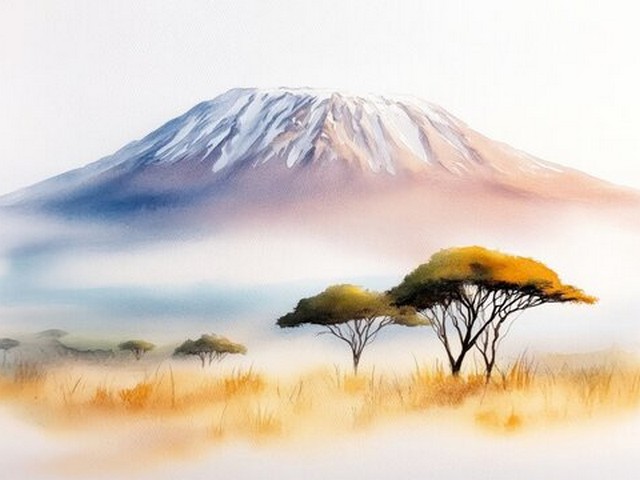Choosing Eco-Friendly Camping Gear for Kilimanjaro: A Guide to Sustainable Adventure
Introduction: Why Eco-Friendly Gear Matters on the Roof of Africa
Mount Kilimanjaro, a beacon of majesty that rises above the clouds in Tanzania, is not just a mountain; it’s a call to adventure for thousands of trekkers globally. Here at Kilimanjaro Centre for Trekking and Ecotourism (KCTE), we understand that every step up the sloping trails should not only challenge the spirit but also respect the pristine environments of this ancient peak. This guide will help you align your journey with the values of conservation and sustainability, focusing on choosing eco-friendly camping gear for your climb up Kilimanjaro.
Embarking on such a monumental trek requires preparation and gear that can handle extreme conditions, but it’s crucial this gear also supports the health of our planet. With the right choices, you’ll leave Kilimanjaro as pristine as you found it, ensuring it remains a source of awe for generations to come.
The Importance of Sustainable Trekking Gear
Protecting Kilimanjaro’s Ecosystem
Kilimanjaro’s unique ecosystems, from lush rainforests to alpine deserts, are delicate. Non-biodegradable waste, chemical pollutants, and heavy camping equipment can cause lasting damage. Choosing eco-friendly gear means selecting products designed with minimal environmental impact, encouraging a circular economy, and preserving the mountain’s biodiversity.
Supporting Ethical Practices
Opting for eco-friendly gear also supports manufacturers who engage in ethical practices, including fair labor conditions and responsible sourcing of materials. By choosing these products, you’re not only advocating for the environment but also for the people behind your gear.
Key Considerations for Eco-Friendly Gear
Materials and Durability
When selecting your camping gear, look for items made from recycled materials, such as PET plastic or repurposed nylon, which reduce the demand on virgin resources. Durability is also key; high-quality, long-lasting products may have a higher upfront cost but are more sustainable over time, as they need to be replaced less frequently.
Waste Reduction
Choose products that come with minimal packaging, or packaging made from recycled or biodegradable materials. Consider gear that is versatile and multi-functional to reduce the amount of equipment you need to bring. Every item should serve a purpose, and ideally more than one.
Energy Efficiency
For electronic gear like GPS devices or headlamps, look for options that are rechargeable or solar-powered. These reduce dependency on disposable batteries, which are harmful to the environment even when disposed of responsibly.
Essential Eco-Friendly Gear for Climbing Kilimanjaro
Eco-Friendly Tents
An eco-friendly tent is typically made from recycled materials and designed for durability to withstand Kilimanjaro’s varying climates. Look for tents that offer repair kits to extend their lifespan further.
Sustainable Sleeping Bags
Opt for sleeping bags filled with ethically sourced down or those made from synthetic fibers recycled from plastic bottles. Ensure they are appropriate for the temperatures you will encounter at higher altitudes.
Green Cooking Equipment
Biodegradable utensils and solar-powered or fuel-efficient stoves are excellent for minimizing your environmental impact. Packing lightweight, non-perishable food can also reduce the amount of waste generated during your trek.
Clothing and Footwear
Choose clothing and boots made from sustainable materials. Many brands now offer items made from organic cotton, bamboo, or recycled fleece. Ensure your clothing is suitable for layering to adjust to changing temperatures without changing outfits.
Packing Tips for Sustainable Trekking
Pack light to minimize your impact and make your trek easier. Use a solar charger for electronic devices and carry reusable water bottles—preferably insulated ones that can handle both hot and cold beverages. Every item packed should be as eco-friendly as possible and absolutely essential.
Why Choose KCTE for Your Kilimanjaro Adventure?
Here at Kilimanjaro Centre for Trekking and Ecotourism, we are not only experts in guiding adventurers to the summit; we are dedicated to preserving the beauty and integrity of this magnificent mountain through sustainable practices. By booking your climb with KCTE, you’re choosing a partner who values the environment as much as you do.
Frequently Asked Questions (FAQ)
What is the most crucial eco-friendly gear for Kilimanjaro?
The most crucial items are a durable, eco-friendly tent, a sustainable sleeping bag, and versatile, layerable clothing made from responsible materials. These ensure comfort and safety without compromising the mountain’s ecological integrity.
Can eco-friendly gear really withstand the harsh conditions of Kilimanjaro?
Absolutely! Today’s eco-friendly gear is designed to meet, if not exceed, the performance standards of traditional equipment. Advances in materials technology mean that you no longer have to choose between being eco-conscious and well-equipped.
How does KCTE promote sustainability?
KCTE promotes sustainability by using local guides, supporting local communities, advocating for leave-no-trace principles, and providing clients with information and resources on choosing sustainable gear.
Conclusion: Your Call to Adventure
Choosing eco-friendly camping gear for your Kilimanjaro trek is more than a personal choice; it’s a commitment to preserving the mountain’s awe-inspiring beauty. As you prepare for your adventure, consider not only the physical challenge ahead but also the impact of your journey. Equip yourself with sustainable gear and book your climb with a responsible tour operator like Kilimanjaro Centre for Trekking and Ecotourism (KCTE). Together, let’s take steps towards a greener future, one exhilarating step at a time up the majestic slopes of Kilimanjaro. Join us in the quest for adventure and sustainability on Africa’s highest peak!




